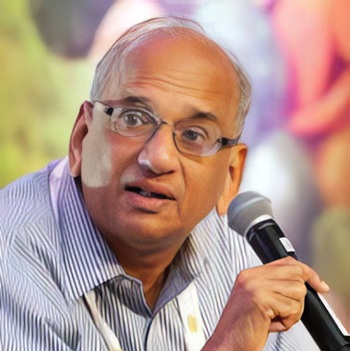.png)

Chandrashekhar is an economist, journalist and policy commentator renowned for his expertise in agriculture, commodity markets and economic policy.
August 11, 2025 at 6:02 AM IST
India’s trade negotiators and policymakers are once again confronting a familiar controversy: whether genetically modified crops should be allowed in through the gates of a bilateral trade deal with the US. The loudest objections focus on fears of the country being swamped with GM soybean and corn imports, displacing domestic produce and hurting farmers. It is an emotive argument, but one that misses the real opportunity: technology.
With the right safeguards, India does not need bulk GM crop imports. It needs access to GM seed technology that can be licensed to domestic seed producers, as happened with Bt Cotton. That transformation offers a clear precedent.
Two decades ago, Indian farmers gained access to cottonseed containing a gene from Bacillus thuringiensis that protected against pests. The result was a near-doubling of production in under 10 years, turning India into the world’s second-largest cotton producer and a major exporter. The fears of environmental damage or uncontrolled imports proved unfounded. Today, roughly 90% of India’s cotton area is planted with Bt varieties, with no record of systemic ecological harm. Crucially, most Bt seed is produced domestically under licence, not imported.
But Cotton’s track record makes it hard to deny that the right technology can lift productivity in a big way, bring down costs, and make Indian crops more competitive abroad. Yet on GM food crops, policy remains stuck in a cautious crouch, swayed by campaigners who blur the line between genuine safety concerns and outright rejection. That hesitation is already costing farmers, and by extension, the wider economy.
Soybean is a case in point. India’s yields, at roughly one tonne per hectare, are a third of the global average and have been stagnant for decades. Production has been stuck at around 11–12 million tonnes a year, forcing the country to import 4 million tonnes of soybean oil annually — equivalent to about 20 million tonnes of soybeans. That import bill is rising, while soymeal exports have dwindled. The yield gap is not just a farm problem; it is a trade and food security problem.
Getting GM soybean seed technology into the hands of Indian farmers could make a real difference, helping them control weeds, cut losses, and lift yields. It’s not untested science; it’s already in use in fields around the world. The challenge for India is to find a practical way in, by striking licensing deals with global developers, producing the seeds here at home, and running them through a tough but fair biosafety process.
This is not to dismiss public unease about GM crops.
Concerns about biodiversity, seed sovereignty, and food chain impacts must be addressed through rigorous field trials, multi-season testing, and transparent regulation. India already has a regulatory framework that subjects GM seeds to extensive scrutiny before approval. That framework should be strengthened, not sidestepped — but nor should it be used as a de facto ban.
Trade policy offers a lever. In negotiations with the US, New Delhi could agree to structured technology transfer and joint R&D in exchange for market concessions in other sectors. Such an approach would align with India’s broader goal of technological self-reliance while helping farmers move beyond subsidy dependence.
The cotton story also rebuts the claim that GM crops are strictly a fibre or industrial issue. Cottonseed oil is the country’s third-largest edible oil, after rapeseed and soybean, and its by-products are used as animal feed, indirectly entering the human food chain. Similarly, soybean yields both edible oil and high-protein meal for livestock. The divide between “food” and “non-food” crops is therefore misleading.
The triple pressures of land constraints, water scarcity, and climate change mean India cannot afford to ignore productivity-enhancing technologies. Without intervention, yield stagnation in key crops will deepen import dependence, erode farmer incomes, and weaken the country’s trade position.
The choice before policymakers is stark. They can hold the line against GM technology, leaving farmers to battle weeds, pests, and erratic weather with outdated tools. Or they can take a science-based approach, import the technology under controlled conditions, and empower domestic producers to supply high-quality seeds. The Bt Cotton experience shows that the latter path can work without triggering the flood of imports that sceptics fear.
India’s farm sector does not lack resilience or entrepreneurial energy. What it lacks is the technological lift to match global productivity levels. The US trade talks offer a rare chance to bridge that gap. It would be a costly mistake to squander it.




